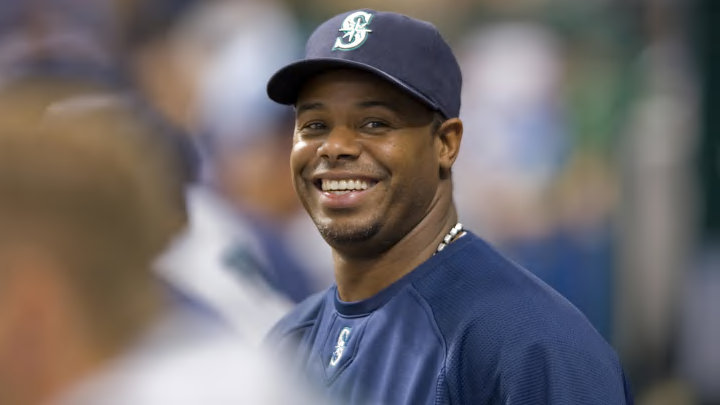The 1989 Ken Griffey Jr. Upper Deck Rookie: Behind The Card

The 1989 Ken Griffey Jr. Upper Deck rookie card is not just another of the many cards that were printed between 1987-1994, it’s THE CARD. It was a changing of the guard in a way, a move past the old reliable sports card brands, to the new kid on the block that utilized production technics and style that were not seen prior to its existence.
I was a kid during this era of collecting, and I can honestly tell you I still remember opening my first pack of Upper Deck baseball. I can remember the feel of those aluminum foil-like wrappers, a bit of sticker shock at the price tag, and of course the feeling of finally, after spending A LOT of allowance money, pulling my first Ken Griffey Jr. rookie card. “The Kid”, with his iconic smile, staring back at me as I found his card in the pack, is a sight that I still remember and cherish to this day.
The Hobby in and Before 1989
There were the big 3 in sports cards - Topps, Donruss, and Fleer—and they had an unrelenting stranglehold on the hobby. The designs, were primarily very simple, with basic card stock and packaging that hadn’t changed much in decades. Packs were inexpensive, and the “premium” category of cards didn’t truly exist.
Now Up to Bat - Upper Deck
Originally launched in 1989, Upper Deck was a more expensive, but also more polished product. At $1 per pack, it definitely shook some collectors' thought processes on what cards should cost. But that higher price tag came with actual return: glossy card stock, full-bleed photography, anti-counterfeit holograms, and that game-changing foil wrapper, that, in my opinion, changed the experience of ripping a pack of sports cards.

What Made Upper Deck Different
Upper Deck changed the hobby for the better. They changed collectors' expectations and showed them what was truly possible when it came to producing a baseball card.
Hologram Security: Each card had a small, silver hologram embedded onto the back. It may have been small, but stood out to collectors. This was key in an era that saw a rise in counterfeit card production.
Photography: The use of full-bleed images, and truly captivating photography of the player was crisp, engaging, and provided a next level feel to the cards.
Card Stock: I can still feel the glossy finish and high-quality paper of these cards - which certainly gave it that premium feel.
The Packaging: The silver aluminum foil-like wrapper was also game-changing. It made you excited to open the pack. You felt you were holding something special in your hands. It honestly just felt different. In speaking to many collectors, that’s something that still sticks in their minds to this day.
Why “The Kid”?
To many, it was no surprise that Upper Deck chose to put a rookie as card #1 in their very first set - because this was no ordinary rookie. At the time, Ken Griffey Jr. may not have yet played a Major League game, but expectations were sky high of him being the next generational talent to hit the MLB.
Griffey of course would go on to live up to, and even exceed the hype. “The Kid”, as he was nicknamed, had the full package, a baseball fan and marketing executives dream. He had the smile, the swing, the backwards hat, and of course those highlight reel catches. He quickly became the face of the MLB for the younger generation of fans. Let’s also not forget the iconic moment he played with his father in an MLB game as well, which also added to his draw and appeal.

As Griffey became the face of the MLB, the one card everyone wanted to pull and add to their collection was his 1989 Upper Deck rookie card. You could say they both rose together to fame.
Behind the Card
People over-use the word iconic today. When you actually experience something that is iconic, you know the difference. This card is still sought after today. While prices have ebbed and flowed over the years, a pristine PSA 10 will still fetch between $2500-3000 dollars. I love speaking to new and younger collectors who have added this card to their collection, whether graded or raw. It shows its lasted the test of time, which is a key to being truly iconic. At the end of the day, the 1989 Upper Deck #1 card is much more than another rookie card—it was a turning point in the hobby.
Some cards just take you back to your youth, to simpler times, and much like the smile Griffey Jr. has on this card - put an instant smile on your face.

Rich has been sharing hobby content since 2018 under his brand, The Happy Collector. A professional digital content creator and writer with over a decade of experience, Rich brings a unique perspective to the hobby, focusing on storytelling “by the collector, for the collector.” His engaging approach has made him a sought-after guest on numerous hobby-related podcasts. Whether he’s diving into the latest trends or reflecting on timeless collectibles, Rich’s passion for the hobby shines through in everything he creates. You can reach Rich @thehappycollector on TikTok or Instagram.
Follow RichBrummett